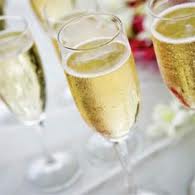 Cava is Spain’s answer to Champagne, although a case can be made for Cava offering more of a rebuke to Champagne than a retort. After all, Cava hails from a different climate and terroir than Champagne, and Cava is produced primarily or entirely from indigenous Spanish grape varieties such as Xarelo-lo, Parellada, Viura, and Macabeo, rather than the traditional French varietals inherent in Champagne. Naturally, all of this accounts for differences between Cava and Champagne, thereby rendering each nation’s sparkling wine unique. But then, there is also the difference in price. The vast majority of Cavas sell for under $20.00 a bottle. Is there much French Champagne available for half that price? Yet, like Champagne good Cava is produced by the same traditional method of fermentation in the bottle, and the end result is plenty of good drinking bubbly. The most compelling reason to drink Cava is simply this: Nobody makes better dry sparkling wine for the money than Spain’s Cava producers. With the addition of champagne yeasts during fermentation, the acid rich musts of Spanish Cava yield sparkling wines of rich flavor, softness and finesse that can at times rival those of Champagne. Where Cava may even have the “edge” on Champagne is in its soft, round, lingering finish – the antithesis of French Champagne which can often possess just a bit too much acidic verve in its aftertaste or finish to suit some tastes. Consequently, I enjoy Cava more often than Champagne because Cava is affordable, versatile, and appealing to a wide audience.
Cava is Spain’s answer to Champagne, although a case can be made for Cava offering more of a rebuke to Champagne than a retort. After all, Cava hails from a different climate and terroir than Champagne, and Cava is produced primarily or entirely from indigenous Spanish grape varieties such as Xarelo-lo, Parellada, Viura, and Macabeo, rather than the traditional French varietals inherent in Champagne. Naturally, all of this accounts for differences between Cava and Champagne, thereby rendering each nation’s sparkling wine unique. But then, there is also the difference in price. The vast majority of Cavas sell for under $20.00 a bottle. Is there much French Champagne available for half that price? Yet, like Champagne good Cava is produced by the same traditional method of fermentation in the bottle, and the end result is plenty of good drinking bubbly. The most compelling reason to drink Cava is simply this: Nobody makes better dry sparkling wine for the money than Spain’s Cava producers. With the addition of champagne yeasts during fermentation, the acid rich musts of Spanish Cava yield sparkling wines of rich flavor, softness and finesse that can at times rival those of Champagne. Where Cava may even have the “edge” on Champagne is in its soft, round, lingering finish – the antithesis of French Champagne which can often possess just a bit too much acidic verve in its aftertaste or finish to suit some tastes. Consequently, I enjoy Cava more often than Champagne because Cava is affordable, versatile, and appealing to a wide audience.
Don’s April Collector’s Series Top Picks
We have several inspired offerings in store for you this month, but I have to admit the French really did their homework this time around. Consequently, my two Top Picks this month go to Château Laplagnotte Bellevue’s stunning 2010 St. Emilion Grand Cru and Verget’s outstanding 2011 Pouilly-Fuissé. For starters, Château Laplagnotte Bellevue is a splendid property whose star continues to rise. Secondly, the 2010 vintage turned in a command performance in Bordeaux, and the folks at Château Laplagnotte Bellevue took full advantage of the splendid weather conditions throughout the vintage and fashioned their finest wine to date. Furthermore, Château Laplagnotte Bellevue’s full throttle St. Emilion Grand Cru drinks great now but will pay even greater dividends if allowed to rest for at least several more years in bottle. It will then provide outstanding drinking for up to a decade or more. And then, there’s Verget’s gorgeous 2011 Pouilly-Fuissé. It’s the real deal. Most other Pouilly-Fuissé producers can only dream of fashioning a wine as pure and flavorful as this. So, what can you expect from this wine? Let’s say elegance, flavor and supreme drink ability: Verget’s Pouilly-Fuissé is the kind of wine I want to drink all night long. Taste and see for yourself. A votre santé.
Don’s April Premier Series Top Picks
 This month’s Top Picks provide a little personal drama. For starters, Querciola’s Barbera d’Alba and Domaine de la Collonge’s Macon-Fuissé have been perennial favorites, but then so have Casa Silva’s delicious Reserva Carmenère and Lawson’s Gewurztraminer. Yet, I have to admit that one would be hard pressed to find a better Barbera d’Alba than Querciola’s 2010. Ripe, juicy and bursting with flavor Querciola’s 2010 Barbera d’Alba charmed the panel with its array of crisp abundant flavors. Consequently, it gets my first Top Pick.
This month’s Top Picks provide a little personal drama. For starters, Querciola’s Barbera d’Alba and Domaine de la Collonge’s Macon-Fuissé have been perennial favorites, but then so have Casa Silva’s delicious Reserva Carmenère and Lawson’s Gewurztraminer. Yet, I have to admit that one would be hard pressed to find a better Barbera d’Alba than Querciola’s 2010. Ripe, juicy and bursting with flavor Querciola’s 2010 Barbera d’Alba charmed the panel with its array of crisp abundant flavors. Consequently, it gets my first Top Pick.
That said, I love good Carmenère, so it would be easy for me to choose Casa Silva’s excellent 2010 Reserva Carmenère as my other top choice, but I wouldn’t be able to sleep tonight if I did. Why? It’s not that the wine is undeserving. To the contrary, nobody consistently turns out better Carmenère than Casa Silva. However, Lawson’s Dry Hills Gewurztraminer is unquestionably the finest New or Old World Gewurztraminer I have had the pleasure to drink in quite awhile, so it wins Top Pick this time around. I think it’s difficult to get Gewurztraminer just right – not too sweet, not to bitter – but Lawson’s managed to arrive at the perfect spot for my taste. More importantly, it paired superbly with a variety of dishes and made believers out of many who were prepared not to like Gewurztraminer. In short, Lawson’s hit a home run with their 2010 Gewurztraminer. A votre santé.
Bordeaux: What’s in a vintage?
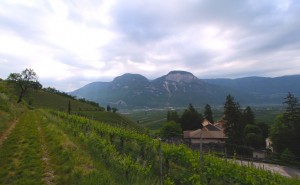 In some wine regions of the world, the quality of wine doesn’t vary tremendously from year to year. The reason is that the weather in some wine areas remains fairly consistent and predictable. In other wine lands such as Bordeaux, vintage means everything. The weather in Bordeaux varies enormously throughout the growing season and from year to year, and because weather largely determines the quality of the vintage and the resulting wine, vintage speaks volumes in the most hallowed of French appellations. The saying in Bordeaux is June makes the quantity, August the style, and September the quality. If the flowering and subsequent berry set go well in June, growers can look forward to a bumper crop. And by August, the vignerons know roughly what to expect in style. But it’s September that ultimately determines how good the Bordeaux will be, particularly the reds, based largely on the amount and frequency of rain that falls during the month. If a tropical depression sweeps in from the Atlantic, all bets will be off. With this said, Bordeaux has enjoyed a bevy of fine vintages in recent years, and no two back to back vintages in memory rank higher than 2009 and 2010. Although the resulting wines are different in style, each of these vintages enjoyed ideal weather in September and October. The years 2009 and 2010 produced from top to bottom some of Bordeaux’s most drinkable and profound red wines. Consequently, I’m putting as many 2009 and 2010 red Bordeaux in my cellar as I can afford because Bordeaux doesn’t get much better than in these two vintages.
In some wine regions of the world, the quality of wine doesn’t vary tremendously from year to year. The reason is that the weather in some wine areas remains fairly consistent and predictable. In other wine lands such as Bordeaux, vintage means everything. The weather in Bordeaux varies enormously throughout the growing season and from year to year, and because weather largely determines the quality of the vintage and the resulting wine, vintage speaks volumes in the most hallowed of French appellations. The saying in Bordeaux is June makes the quantity, August the style, and September the quality. If the flowering and subsequent berry set go well in June, growers can look forward to a bumper crop. And by August, the vignerons know roughly what to expect in style. But it’s September that ultimately determines how good the Bordeaux will be, particularly the reds, based largely on the amount and frequency of rain that falls during the month. If a tropical depression sweeps in from the Atlantic, all bets will be off. With this said, Bordeaux has enjoyed a bevy of fine vintages in recent years, and no two back to back vintages in memory rank higher than 2009 and 2010. Although the resulting wines are different in style, each of these vintages enjoyed ideal weather in September and October. The years 2009 and 2010 produced from top to bottom some of Bordeaux’s most drinkable and profound red wines. Consequently, I’m putting as many 2009 and 2010 red Bordeaux in my cellar as I can afford because Bordeaux doesn’t get much better than in these two vintages.
Don
Some Random or Not So Random Thoughts
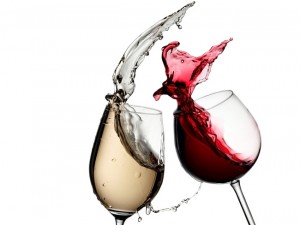 I often wonder why some wines are more popular than others. At first, the answer seems obvious and quite self explanatory. After all, quality, like cream, rises to the top. And given a choice and some experience, most seasoned wine drinkers choose the quality product, especially when price is not influencing their decision – either way. Consequently, when tasting wines with our panel members, prices are never revealed until after the tasting. Yet, I have to believe there’s something more to a wine’s popularity than overall quality. Doesn’t style count for something? I tend to think so. If style didn’t matter, why do some Chardonnays of comparable price and quality outsell others? And what about drink ability in a wine? Drink ability is that certain something or more particularly that wonderful attribute in a wine that’s hard to define, but easy to recognize. Rarely, does it appear in the biggest, boldest or most dramatic wine on the table, but in the wine that goes down ever so easily and continues to ingratiate the palate with its elegance and sensual charms. Unlike some of the bigger, brawnier wines, a wine with that certain something (or je ne sais quoi as the French so elegantly say) doesn’t lose its luster after the first or second glass and begin to wear on the palate; instead, it’s a wine that becomes more alluring and easy to drink as the night goes on. Pouilly-Fuissé and the finer white wines of Macon-Villages offer such drink ability, and more than a bit of style, too. Good Pinot Noir has that quality as well. When faced with a wine of tremendous size and stature versus one of eminent drink ability, I’ll often choose drink ability. There’s something to be said for a wine that you or I could drink all night. Besides, big isn’t always beautiful.
I often wonder why some wines are more popular than others. At first, the answer seems obvious and quite self explanatory. After all, quality, like cream, rises to the top. And given a choice and some experience, most seasoned wine drinkers choose the quality product, especially when price is not influencing their decision – either way. Consequently, when tasting wines with our panel members, prices are never revealed until after the tasting. Yet, I have to believe there’s something more to a wine’s popularity than overall quality. Doesn’t style count for something? I tend to think so. If style didn’t matter, why do some Chardonnays of comparable price and quality outsell others? And what about drink ability in a wine? Drink ability is that certain something or more particularly that wonderful attribute in a wine that’s hard to define, but easy to recognize. Rarely, does it appear in the biggest, boldest or most dramatic wine on the table, but in the wine that goes down ever so easily and continues to ingratiate the palate with its elegance and sensual charms. Unlike some of the bigger, brawnier wines, a wine with that certain something (or je ne sais quoi as the French so elegantly say) doesn’t lose its luster after the first or second glass and begin to wear on the palate; instead, it’s a wine that becomes more alluring and easy to drink as the night goes on. Pouilly-Fuissé and the finer white wines of Macon-Villages offer such drink ability, and more than a bit of style, too. Good Pinot Noir has that quality as well. When faced with a wine of tremendous size and stature versus one of eminent drink ability, I’ll often choose drink ability. There’s something to be said for a wine that you or I could drink all night. Besides, big isn’t always beautiful.
Don
It’s about time!
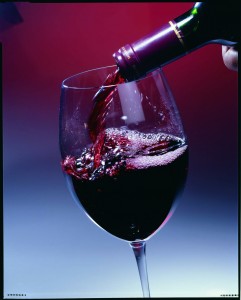 It’s about time that New World wineries caught up with consumers’ tastes. What do I mean by that? Several things! First, more and more wineries in Australia, California, and elsewhere now make proprietary wines, which means wineries are no longer exclusively beholden to varietal bottling (whereby 75%-100% of a given wine comes from a single grape variety), and are making outstanding wines from blends of grapes. Don’t get me wrong. I am not opposed to varietal bottling. On the contrary, many great varietal wines abound as the wealth of outstanding Cabernet Sauvignon, Chardonnay, Syrah, Zinfandel, and other varietal offerings will attest. My point is that varietal bottling isn’t the be all and end all, or the only way to make great wine. Using two or more great varieties in varying proportions often increases the complexity and drinking pleasure of a wine. Why limit our pleasure to one primary grape? So many excellent meritage selections and proprietary wines (typically blends with such given names as Sassolino, The Berry Box, or Honey Pot) now abound. It’s a new day and a new year for wine. Besides, Bordeaux, Chianti, Rioja and other great wines region have been blending grapes for millennia. A varietal name on a bottle is no guarantee of quality. Conversely, many blends and proprietary wines constitute some of the most exciting wines being made in America today at all price points, so don’t be afraid to discover these treasures.
It’s about time that New World wineries caught up with consumers’ tastes. What do I mean by that? Several things! First, more and more wineries in Australia, California, and elsewhere now make proprietary wines, which means wineries are no longer exclusively beholden to varietal bottling (whereby 75%-100% of a given wine comes from a single grape variety), and are making outstanding wines from blends of grapes. Don’t get me wrong. I am not opposed to varietal bottling. On the contrary, many great varietal wines abound as the wealth of outstanding Cabernet Sauvignon, Chardonnay, Syrah, Zinfandel, and other varietal offerings will attest. My point is that varietal bottling isn’t the be all and end all, or the only way to make great wine. Using two or more great varieties in varying proportions often increases the complexity and drinking pleasure of a wine. Why limit our pleasure to one primary grape? So many excellent meritage selections and proprietary wines (typically blends with such given names as Sassolino, The Berry Box, or Honey Pot) now abound. It’s a new day and a new year for wine. Besides, Bordeaux, Chianti, Rioja and other great wines region have been blending grapes for millennia. A varietal name on a bottle is no guarantee of quality. Conversely, many blends and proprietary wines constitute some of the most exciting wines being made in America today at all price points, so don’t be afraid to discover these treasures.
Don
The King of Wines, and the Wine of Kings
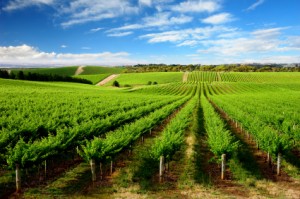 Barolo has affectionately been referred to as the “King of Wines, and the Wine of Kings.” In a fine vintage and in the hands of a skilled winemaker, Barolo is unquestionably a noble wine fit for a king and the rest of us commoners, too. For savvy consumers who are patient enough to afford Barolo the royal treatment or even just a little extra care, no other fine wine on the market offers more quality for the money as Barolo.
Barolo has affectionately been referred to as the “King of Wines, and the Wine of Kings.” In a fine vintage and in the hands of a skilled winemaker, Barolo is unquestionably a noble wine fit for a king and the rest of us commoners, too. For savvy consumers who are patient enough to afford Barolo the royal treatment or even just a little extra care, no other fine wine on the market offers more quality for the money as Barolo.
Barolo is born on the Langhe Hills of Italy’s Piedmont, on steep craggy Alpine foothills as they tumble out of nearby Switzerland and France. Barolo is the most masculine of Piedmont’s great Nebbiolo based wines and the focal point in the region’s viticultural tiara. Barolo’s lineage dates back to the Middle Ages, but it wasn’t until the mid 18th century that Barolo began to evolve into its present form in the vicinity of Alba, a distinct Old World city that serves as the white truffle capital of Italy as well as Piedmont’s premier wine town.
Today, the limited production of Barolo generates from the huddled hills of two valleys, Serralunga and Barolo, and their five principal communities, all of which lie to the southwest of the city of Alba and are reputed to impart distinctive characteristics and traits to their respective progeny. The townships of Serralunga, Castiglione Falletto, and Monforte are situated in the Serralunga Valley and are reputed to produce the region’s most masculine, longest-lived Baroli. Meanwhile, Barolo and La Morra, from which the more “delicate” wines of the zone are said to flow, are part of the Barolo Valley. However, there are many exceptions, styles, and innumerable variations in Barolo on the same theme, and this only touches upon the decades old debate in Barolo over the relative merits of the modern versus traditional styles of Barolo, which have as much to do with individual winemaking techniques as they do the amount and kind of barrel aging the wines receive. Happily, in the end, there is great Barolo fashioned in all five of the major townships, in both modern and traditional styles. However, there is one caveat. Barolo needs time in bottle; and whether it is young or mature, Barolo needs to breathe. Decant a Barolo two hours or more before serving and the magic will soon appear in your glass.
Don

